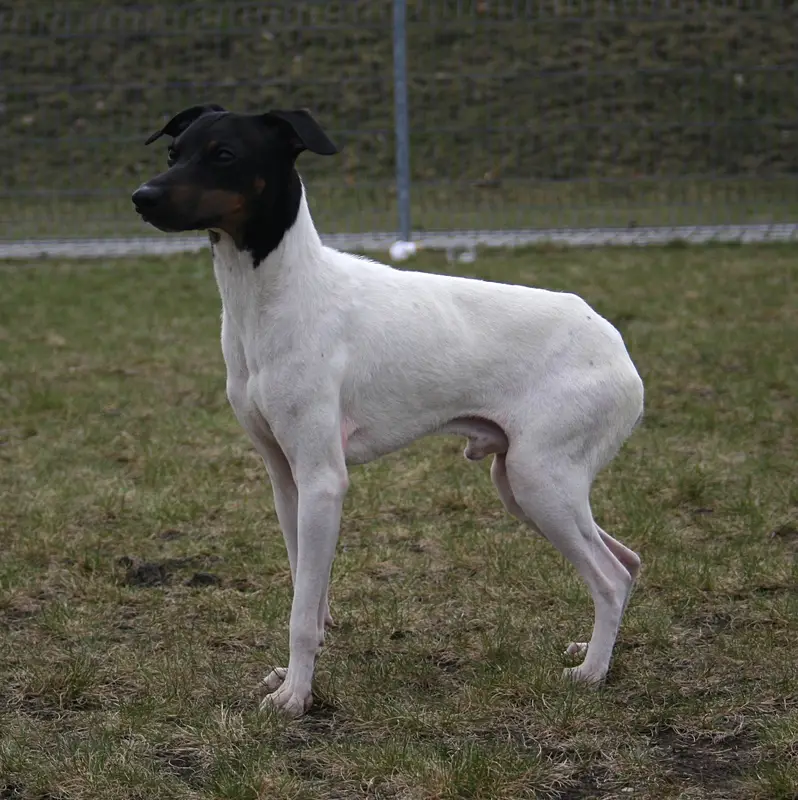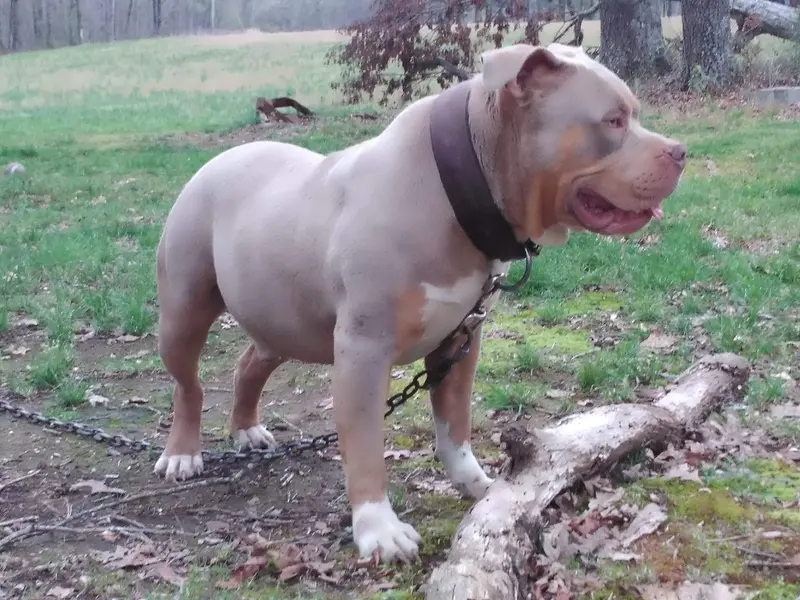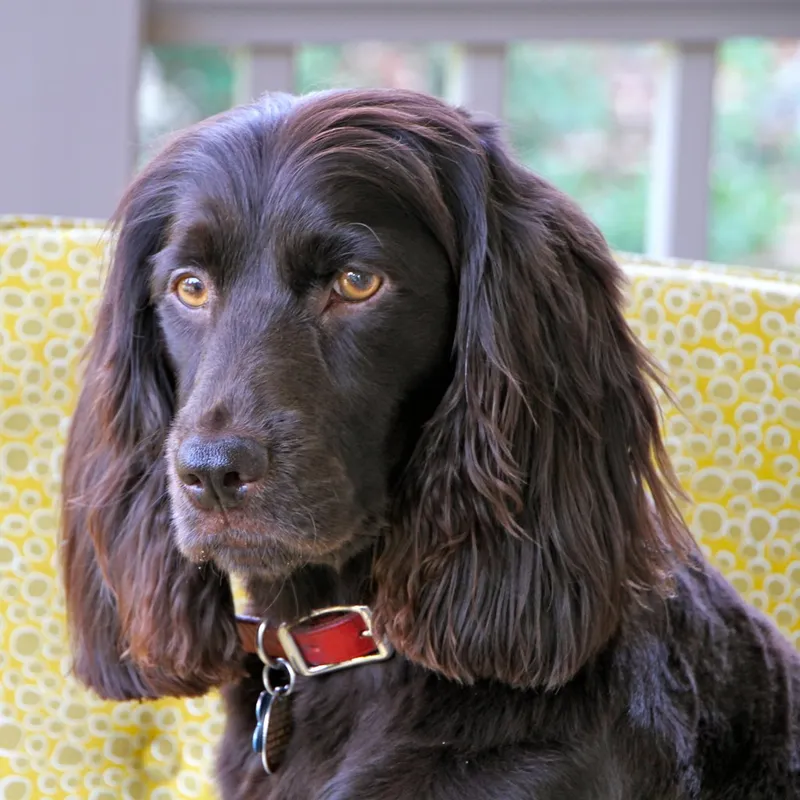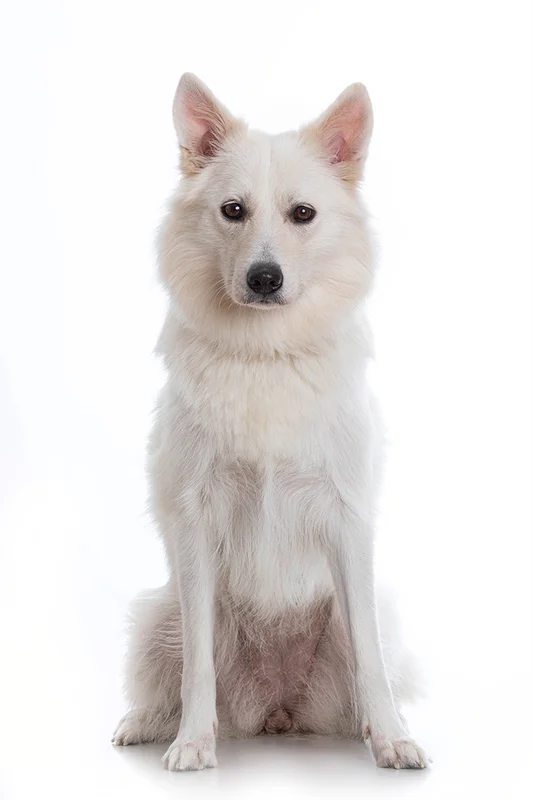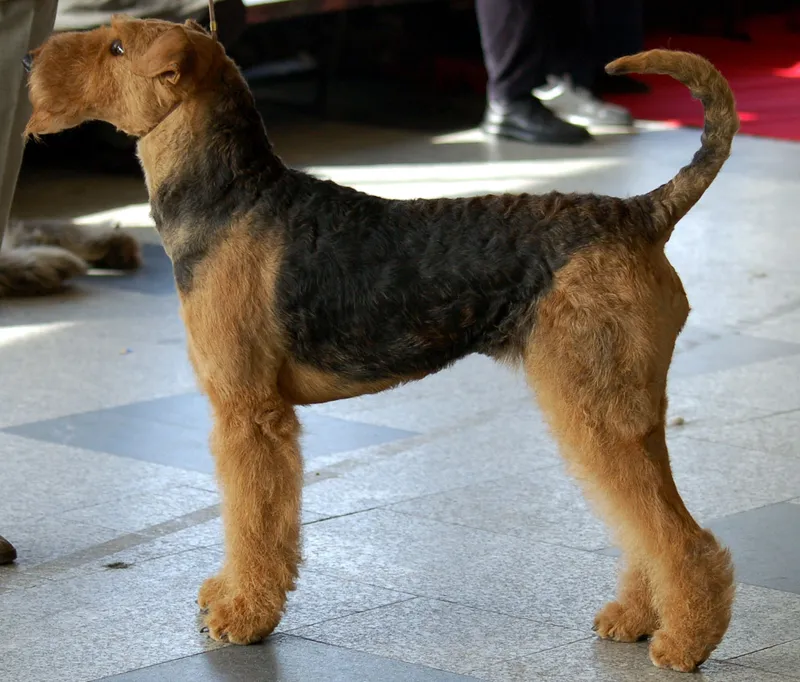American Hairless Terrier
The American Hairless Terrier is a small, energetic breed known for its affectionate nature and playful personality. Ideal for families and allergy sufferers.
Overview
🐕Breed Overview
✨Key Traits
💡What Makes American Hairless Terrier Special
The American Hairless Terrier is characterized by its unique hairless coat, which sets it apart from other breeds. This breed is known for its high intelligence and trainability, making them excellent candidates for various dog sports.
Their affectionate nature makes them great companions, and they often form strong bonds with their families. AHTs are also known for their playful demeanor, often engaging in games and activities that stimulate their minds and bodies.
Their adaptability allows them to thrive in various living situations, from apartments to larger homes, as long as they receive adequate exercise and social interaction. Overall, the AHT's combination of intelligence, playfulness, and affection makes them a beloved choice for many dog lovers.
The American Hairless Terrier (AHT) is a lively and affectionate breed that has captured the hearts of dog lovers across the United States. Originating from a hairless puppy named Josephine in 1972, this breed was developed from the Rat Terrier to provide companionship without the allergy concerns associated with fur. With a height ranging from 10 to 18 inches and a weight of 12 to 16 pounds, the AHT is a small yet robust dog, known for its smooth, hairless skin and charming personality.
The AHT is characterized by its playful and intelligent nature, making it an excellent candidate for agility and obedience training. They are known for their friendly demeanor towards family members and their ability to get along with other pets, especially if raised together. Their moderate exercise needs, requiring around 30 to 60 minutes of activity daily, can be met through walks, playtime, and engaging in dog sports.
Despite their lack of fur, American Hairless Terriers are relatively low-maintenance in terms of grooming, requiring regular bathing to keep their skin healthy. They are less prone to skin issues compared to other hairless breeds, but they do need protection from extreme temperatures and sun exposure. With an average lifespan of 12 to 15 years, the AHT is a healthy breed, but potential owners should be aware of their strong prey drive and need for socialization.
They thrive in environments where they can be part of family activities and enjoy human companionship. Overall, the American Hairless Terrier is a delightful breed that brings joy and energy to any household, making them a wonderful choice for families and individuals alike.
🎉Fun Facts
AHTs are often described as 'clownish' due to their playful antics and lively personalities.
The American Hairless Terrier is considered hypoallergenic due to its lack of fur.
They are known for their agility and excel in dog sports like agility and obedience competitions.
Breed Characteristics
Family & Friends
Good Behavior
Get Up & Go
Household Harmony
Temperament & Personality
✨Key Traits
🐕Core Temperament
The American Hairless Terrier is known for its energetic and alert temperament. They are curious and intelligent, often displaying a playful attitude that endears them to their families.
While they can be reserved with strangers, they are generally friendly and sociable once they feel comfortable. Their strong prey drive may lead them to chase small animals, so supervision is essential in environments with other pets.
With proper training and socialization, AHTs can be excellent companions, displaying great affection for their owners and family members.
💫Personality Profile
The American Hairless Terrier is a lively and affectionate breed that thrives on human companionship. They are known for their playful and curious nature, often engaging in interactive play with their owners.
AHTs are intelligent and eager to learn, making them relatively easy to train. They enjoy being part of family activities and are generally friendly with children and other pets, especially if socialized from a young age.
Their energetic disposition means they require regular exercise, but they also appreciate downtime snuggling with their family members. While they can be reserved with strangers, they are typically friendly and sociable once they feel comfortable.
🔊Vocal Tendencies
The American Hairless Terrier has a moderate noise level, typically barking to alert their owners of any unusual activity or when they are excited. They may bark when playing or during training sessions, but they are not known to be excessive barkers.
Their vocalizations can vary based on their mood; they may whine or make other sounds when seeking attention or expressing excitement. Proper training and socialization can help manage their barking tendencies, ensuring they are well-behaved in various situations.
Affection & Social Traits
Energy & Activity
Communication Style
Care Requirements
🏃♂️Exercise Requirements
Daily Exercise
The American Hairless Terrier (AHT) is an energetic breed that requires a moderate amount of exercise to maintain its physical and mental well-being. Ideally, they should engage in at least 30 to 60 minutes of exercise daily, which can be broken down into multiple sessions throughout the day.
Activities such as brisk walks, playtime in the yard, and agility training are excellent for this breed. They enjoy games that stimulate their minds and bodies, such as fetch and hide-and-seek.
Puppies may require shorter, more frequent play sessions to accommodate their developing bodies, while senior dogs may benefit from gentler activities to avoid strain. Regular exercise helps prevent behavioral issues stemming from boredom, such as excessive barking or digging, and contributes to a healthy weight and cardiovascular health.
Preferred Activities
🏠Living & Adaptability
Space Requirements
The American Hairless Terrier is adaptable and can thrive in various living environments, including apartments and homes with small yards. However, they do require space to run and play.
For apartment dwellers, daily walks and regular trips to a dog park can provide the necessary exercise and stimulation. In homes with yards, a secure area for play is ideal.
It's important to ensure that the environment is safe, as their small size makes them vulnerable to larger animals and hazards. Lack of adequate space or exercise can lead to anxiety and destructive behaviors.
Climate Preference
🍲Feeding Guide
Schedule
Food Types
Portion Size
Special Nutritional Needs
The American Hairless Terrier does not have specific dietary restrictions, but it's important to provide a balanced diet rich in protein and essential nutrients. Some AHTs may be prone to food allergies, so monitoring their reactions to new foods is advisable. Regular vet check-ups can help identify any dietary needs or sensitivities.
✨Grooming Requirements
Grooming Overview
The grooming needs of the American Hairless Terrier are relatively moderate. Their hairless skin requires regular bathing to remove dirt and oils, typically every 1-2 weeks.
Owners should use gentle, hypoallergenic shampoos to avoid skin irritation. It's also important to moisturize their skin with a suitable lotion to prevent dryness.
Regular checks for any skin irritations or allergies are essential, especially since they can be sensitive to environmental factors. For the coated variety, regular brushing is necessary to keep the coat healthy and free of mats.
Care Schedule
Bathe every 1-2 weeks; moisturize skin as needed; check for skin irritations regularly.
Health Profile
⚕️Health Care
Regular health care significantly impacts the lifespan of the American Hairless Terrier. Routine veterinary check-ups, vaccinations, and preventive treatments are essential for early detection of health issues.
Maintaining a healthy diet, providing regular exercise, and ensuring proper dental care are crucial for their overall health. Owners should also be vigilant about monitoring their dog's skin condition and addressing any concerns promptly to prevent complications.
Health Issues Overview
⏳Average Lifespan
Genetic Factors
Genetics play a vital role in the lifespan of the American Hairless Terrier. The breed's hairless trait is a recessive gene, which means that careful breeding practices are essential to maintain genetic diversity and avoid hereditary health issues.
Potential owners should seek reputable breeders who conduct health screenings and maintain detailed breeding records. Understanding the genetic background of the dog can help mitigate risks associated with common health conditions and ensure a healthier lifespan.
Living Conditions
The lifespan of the American Hairless Terrier can be influenced by various environmental factors, including housing conditions, climate, and social interactions. AHTs thrive in environments where they receive regular exercise and mental stimulation.
Living in a warm climate may require additional care to protect their skin from sunburn, while colder climates necessitate protective clothing to keep them warm. Social interactions with humans and other pets are crucial for their emotional well-being, contributing to a longer, healthier life.
Regular veterinary care and a balanced diet also play significant roles in promoting longevity.
🏥Common Health Issues
Skin allergies
Warning Signs
🔬Diagnosis
Veterinary examination and allergy testing.
💊Treatment
Topical treatments, antihistamines, or dietary changes.
📝Management Tips
Keep the skin clean and moisturized; avoid known allergens; consult a vet for appropriate treatments.
Dental issues
Warning Signs
🔬Diagnosis
Veterinary dental examination.
💊Treatment
Dental cleanings and extractions if necessary.
📝Management Tips
Regular dental care, including brushing and professional cleanings.
Joint issues (e.g., patellar luxation)
Warning Signs
🔬Diagnosis
Veterinary examination and imaging.
💊Treatment
Surgical intervention may be necessary in severe cases.
📝Management Tips
Maintain a healthy weight; provide joint supplements if recommended by a vet.
🛡️Preventive Care
🔬Dental Health Evaluation
A dental examination to assess oral health and identify any potential issues early.
📅 Annually or as recommended by a veterinarian.
🔬Skin Allergy Testing
A skin examination to check for allergies, irritations, or other skin conditions.
📅 Every 6-12 months or as needed.
🔬Comprehensive Health Check
A general health screening to monitor overall health and detect any underlying conditions.
📅 Annually or as recommended by a veterinarian.
Training
🧠Intelligence & Trainability
💪Work Drive
The American Hairless Terrier has a strong work drive, stemming from its terrier heritage. They thrive on tasks that challenge their intelligence and physical abilities.
Activities such as agility training, obedience competitions, and interactive games fulfill their need for mental stimulation. Without adequate engagement, they may resort to undesirable behaviors.
Owners should provide a variety of activities to keep their AHT mentally and physically active, ensuring a happy and well-adjusted companion.
⚠️Training Considerations
Common behavioral challenges for the American Hairless Terrier include their strong prey drive and tendency to bark when alarmed. To address these challenges, early socialization and consistent training are essential.
Engaging them in activities that channel their energy, such as agility training or interactive play, can help mitigate excessive barking and digging. Providing mental stimulation through puzzle toys and obedience training can also reduce behavioral issues.
Owners should be patient and use positive reinforcement techniques to encourage desired behaviors.
📝Training Tips
Training the American Hairless Terrier can be a rewarding experience due to their intelligence and eagerness to please. Positive reinforcement methods, such as treats and praise, work best for this breed.
Start with basic commands and gradually introduce more complex tasks. Consistency is key; short, frequent training sessions are more effective than long, infrequent ones.
Socialization with other dogs and people from a young age is crucial to develop a well-rounded temperament. Engaging in activities like agility or obedience classes can enhance their training experience and strengthen the bond between dog and owner.
History & Heritage
📜Origin Story
The American Hairless Terrier's story begins in the 18th century with the introduction of mixed breed terriers known as feists to North America. These dogs were bred for vermin control and companionship.
The Rat Terrier breed emerged in the late 1800s, incorporating various breeds, including Beagles and Italian Greyhounds. The unique hairless variant appeared in 1972, leading to the establishment of the American Hairless Terrier as a distinct breed.
This breed was developed to cater to the needs of dog lovers who desired a companion without the allergy concerns associated with fur.
⏳Development History
The American Hairless Terrier originated from a hairless puppy named Josephine, who was born in a litter of Rat Terriers in Louisiana in 1972. The breed was developed by Edwin and Willie Scott, who sought to reproduce the hairless trait.
By 1981, they successfully bred a litter that established the foundation for the breed. The American Hairless Terrier was recognized by the United Kennel Club in 1998 and has since gained recognition from the American Kennel Club, achieving full recognition in 2016.
The breed has evolved to maintain its terrier characteristics while being distinct from its Rat Terrier ancestors.
🛡️Purpose & Historical Role
Originally bred for vermin control, the American Hairless Terrier has transitioned into a beloved companion breed. Its intelligence and agility make it suitable for various activities, including agility competitions and obedience training. The breed's playful nature and affectionate demeanor have made it a popular choice for families and individuals alike.
🏺Cultural Significance
The American Hairless Terrier has gained popularity not only as a companion animal but also as a potential choice for allergy sufferers due to its hairless nature. This breed has been featured in various dog shows and has a growing presence in popular culture, often recognized for its unique appearance and lively personality. The breed's development has sparked interest in hairless dogs, leading to increased awareness and appreciation for their distinct characteristics.
Conservation Status
This breed is less common but has stable populations in certain regions.





